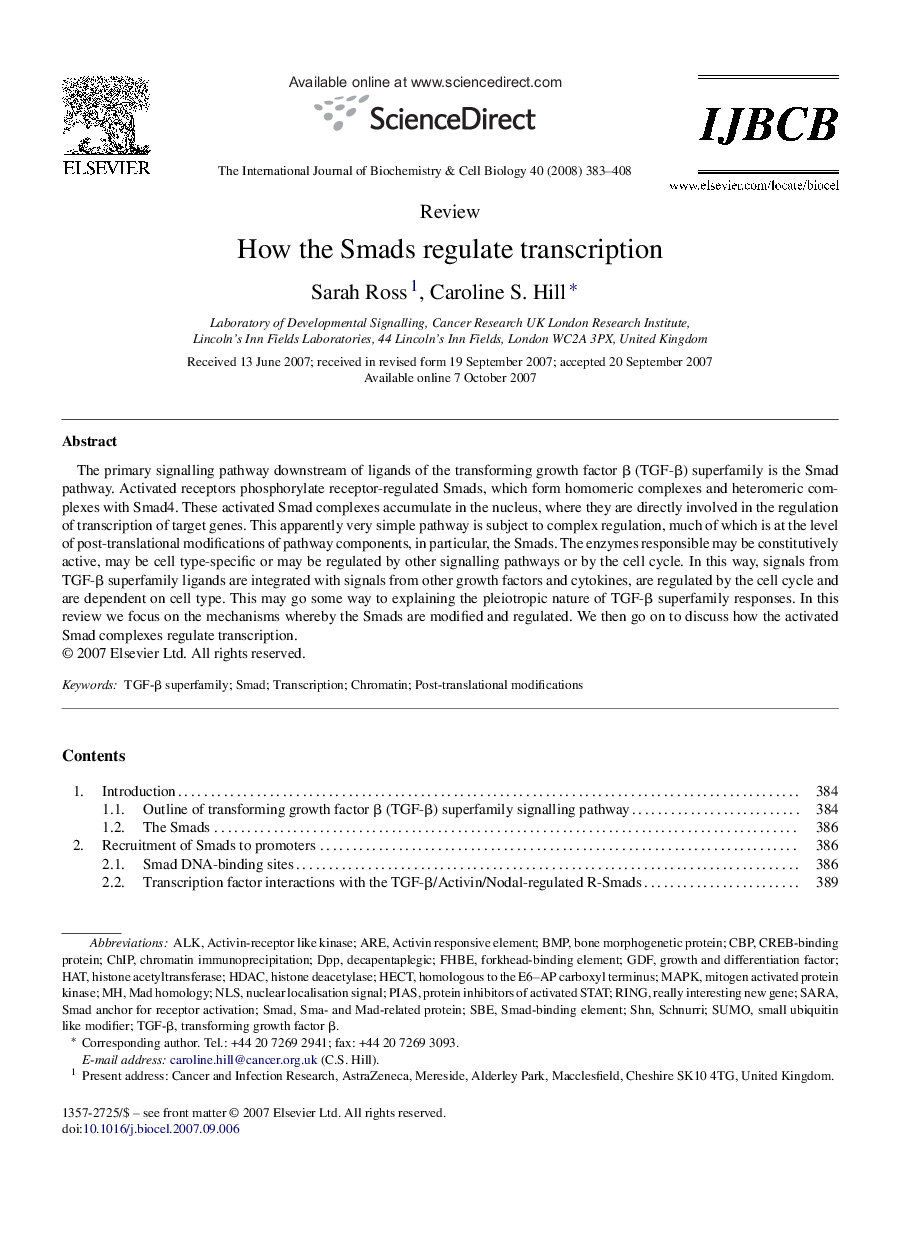| Article ID | Journal | Published Year | Pages | File Type |
|---|---|---|---|---|
| 1984800 | The International Journal of Biochemistry & Cell Biology | 2008 | 26 Pages |
The primary signalling pathway downstream of ligands of the transforming growth factor β (TGF-β) superfamily is the Smad pathway. Activated receptors phosphorylate receptor-regulated Smads, which form homomeric complexes and heteromeric complexes with Smad4. These activated Smad complexes accumulate in the nucleus, where they are directly involved in the regulation of transcription of target genes. This apparently very simple pathway is subject to complex regulation, much of which is at the level of post-translational modifications of pathway components, in particular, the Smads. The enzymes responsible may be constitutively active, may be cell type-specific or may be regulated by other signalling pathways or by the cell cycle. In this way, signals from TGF-β superfamily ligands are integrated with signals from other growth factors and cytokines, are regulated by the cell cycle and are dependent on cell type. This may go some way to explaining the pleiotropic nature of TGF-β superfamily responses. In this review we focus on the mechanisms whereby the Smads are modified and regulated. We then go on to discuss how the activated Smad complexes regulate transcription.
